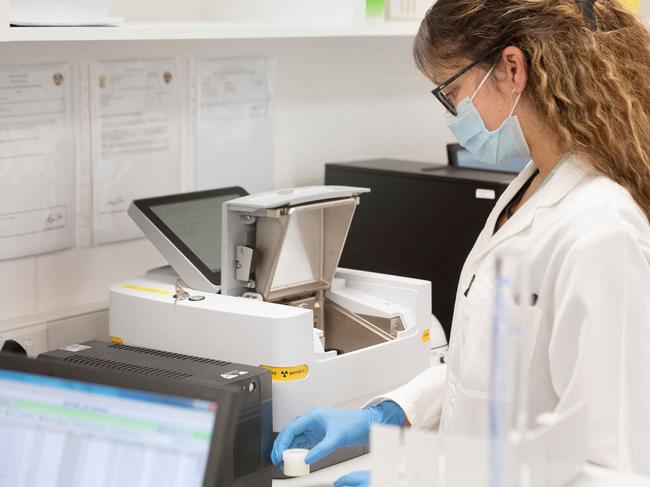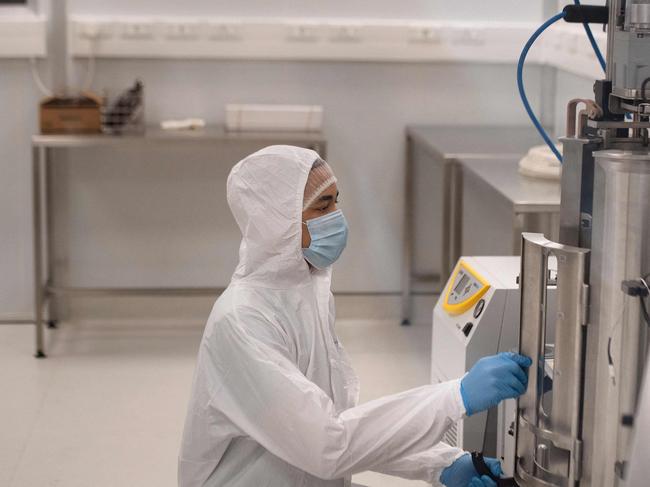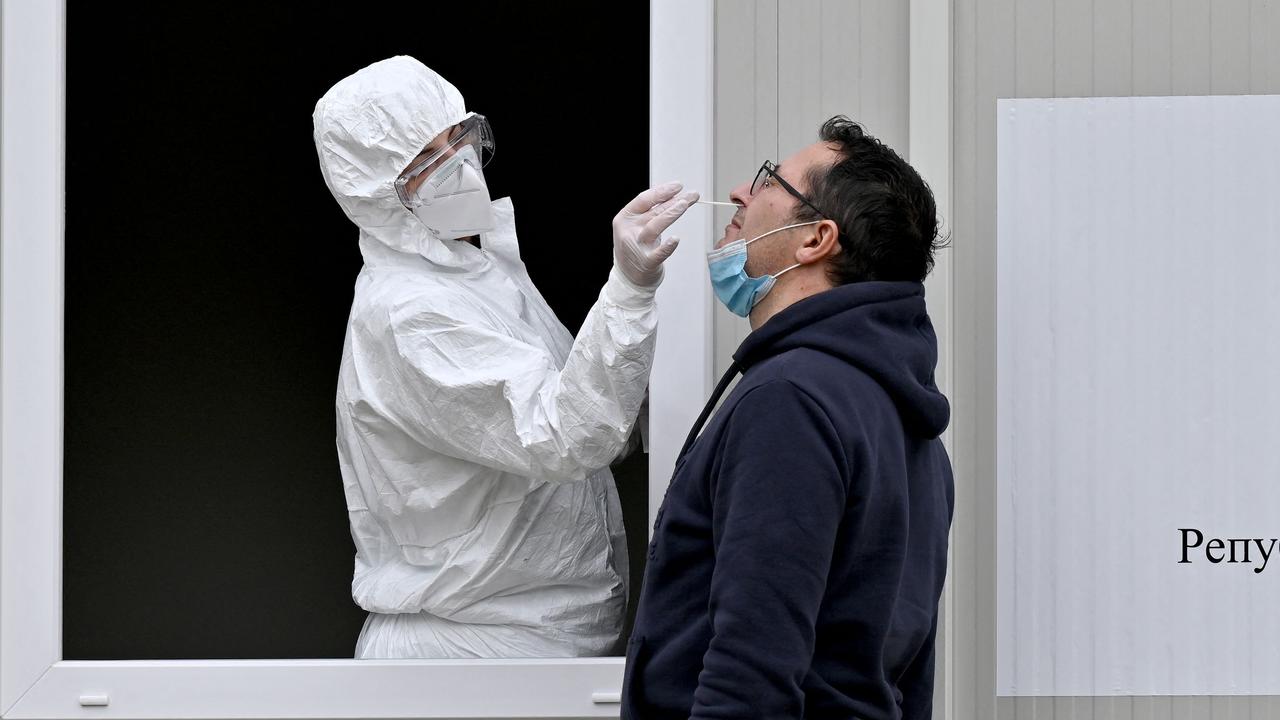How the technology in coronavirus vaccines could unlock the cure for cancer and other illnesses
From cancer to AIDS to the flu, here’s how Covid-19 vaccine technology could help prevent and treat persistent and deadly human diseases.
Coronavirus
Don't miss out on the headlines from Coronavirus. Followed categories will be added to My News.
The coronavirus pandemic has made vaccines from Pfizer/BioNTech and Moderna and the mRNA technology that they use into household names.
These types of jabs are new but researchers have been working for decades to try to figure out how to use messenger RNA for other vaccinations against diseases such as zika and rabies and to help prevent and treat illnesses from AIDS to cancer.

Could mRNA technology help prevent cancer?
The messenger RNA (mRNA) technology used in the Moderna and Pfizer Covid-19 vaccines could be used to tackle cancer, according to experts.
“Cancer cells make proteins that can be targeted by mRNA vaccines. Progress in this area has been reported in treating melanoma,” Dr Jeffrey A. Metts, chief of staff at Cancer Treatment Centres of America in Atlanta, told Healthline.
“We can look to the dramatic drop in cervical cancer to see what improved awareness, screening, and administration of the HPV vaccine has achieved in the last 10 years,” Dr Metts said.
“The HPV vaccine has shown that we can prevent 80 to 90 per cent of cervix cancers and that is an incredibly effective strategy related to cancer. But it doesn’t treat it,” he said.
A Covid-19 vaccine primes the body’s immune system to recognise and attack viral cells.
A cancer vaccine works similarly, teaching the body’s immune system to recognise cancer cells either to prevent cancer from returning or seeking and destroying tumours in the body.
One reason this works is because mRNA editing is such a flexible technology.

How and why does mRNA work?
Messenger RNA’s job in the body is to help deliver specific instructions from DNA to cells.
In the case of the Pfizer/BioNTech and Moderna jabs, lab-generated mRNA tells human cells to create antigens or proteins that are similar to ones found in the Covid-19 virus.
Thanks to those antigens, a person’s immune system learns how to fight the virus and neutralise Covid if it enters the body.
This direct communication with cells is revolutionary.
“mRNA can be encoded with any protein imaginable. We can deliver mRNA into tumour cells such that the tumour will express proteins that signal the immune system to attack the tumour cell as a foreign pathogen that needs to be removed,” Dr Jacob Becraft of Strand Therapeutics, which is developing mRNA drugs, told Healthline.
“We can also deliver mRNA into immune cells, arming them with enhanced sensors for detecting tumours. This effectively teaches the immune system how to kill tumour cells,” Dr Becraft said.
Where did this technology come from?
The first big breakthrough, in the late 1970s, was in using mRNA to make test-tube cells produce proteins.
A decade later, scientists were able to get the same results in mice, but mRNA still had two major drawbacks as a medical tool.
For one thing, cells in live animals resisted synthetic mRNA, provoking a dangerous immune response.
On top of that, mRNA molecules are fragile, making them difficult to deliver to the system without altering them.
In 2005 researchers Katalin Kariko and Drew Weissman of Penn State University published a groundbreaking study showing that a lipid – or fat molecule – envelope could safely deliver mRNA without negative effects.
The research caused a buzz in the pharmaceutical community and start-ups dedicated to mRNA therapies began to pop up around the world.

What else can mRNA do?
Scientists have worked on developing mRNA jabs for illnesses like seasonal flu, rabies and zika, as well as those that have remained vaccine-resistant until now, including malaria and AIDS.
Researchers have also started testing personalised treatments on cancer patients, using samples of the proteins in their tumours to create specialised mRNA.
This then triggers the immune system to target specific cancer cells. “The mRNA platform is versatile,” University of Pennsylvania biochemist Norbert Pardi told AFP, “any protein can be encoded as mRNA so there are many potential applications.”

Can Covid technology improve flu jab?
Winter is coming to the northern hemisphere, and with it the flu season, however advances spurred by the fight against Covid-19 are boosting hopes of finding a more reliable vaccine.
Flu jabs have long been available to fight off the seasonal virus, but their rate of effectiveness can vary from between 40 and 70 per cent.
They work by injecting an inactivated virus strain into humans to trigger immunity. That inactivated virus must be prepared well in advance, and this can cause problems if the strains don’t match up.
But now laboratories are rushing to apply what has been learned about RNA jabs to the flu.
RNA, or ribonucleic acid, is the lesser-known cousin of DNA, or deoxyribonucleic acid, the building block of genes.
Last month US pharmaceutical firm Pfizer began injecting humans with a flu vaccine that uses messenger RNA (or mRNA), which it already uses in its coronavirus vaccine.
Moderna, a US biotech company that makes a rival Covid vaccine using mRNA, launched its own flu jab trials in July.
Norbert Pardi, a vaccine specialist at the University of Pennsylvania, has used mRNA to formulate several antigens in a single vaccine.
Antigens cause immune systems to produce antibodies, and Pardi hopes his approach, already tested on mice, will “induce protection from multiple, diverse flu strains”.
“Such multivalent vaccines will likely induce broadly protective immune responses superior to currently used flu vaccines,” he told AFP.
Originally published as How the technology in coronavirus vaccines could unlock the cure for cancer and other illnesses


